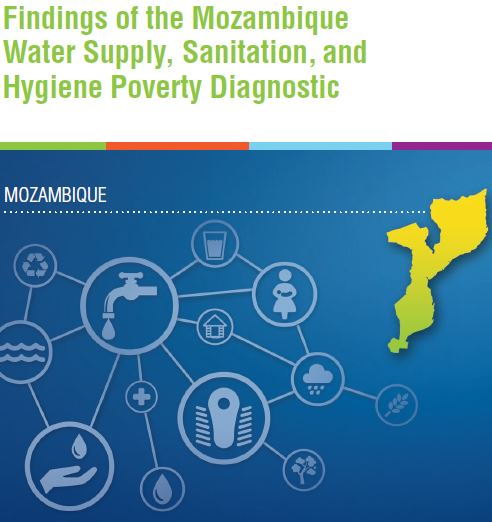Findings of the Mozambique Water Supply, Sanitation, and Hygiene Poverty Diagnostic
The poor are not benefiting equally from economic growth in Mozambique. Mozambique’s economy has expanded at an accelerated pace in recent years, with real, per capita gross domestic product (GDP) growing between 5 and 7 percent in the last decade, and the country’s Human Development Index (HDI) steadily rising over the last 20 years. Yet growth has not been even in the country, and the government still faces the challenge of reducing poverty and inequality across regions and provinces. In 2015 Mozambique’s population totaled an estimated 25 million, with almost half (11.2 million) living in poverty and 10 million falling in the bottom 40 percent (B40) of the wealth distribution in the country. Relative to other African countries with similar levels of income, Mozambique has experienced slightly lower improvements in access to improved water since 2010. Access to improved water sources in Mozambique was approximately 58 percent in 2015, around the mean access value of this group of countries. Mozambique has exhibited a minor improvement in access level since 2010, like Ethiopia and Nigeria, whereas Tanzania, Niger, and the Democratic Republic of Congo exhibit larger increases. The gap between urban and rural areas is large and similar to the gap in the other countries, with the exception of Niger and Nigeria. In Niger, access to improved water sources in rural areas has increased the most since 2010, leading to a large gap reduction, whereas in Nigeria, access in urban areas decreased while access in rural areas increased. The WASH Poverty Diagnostic reveals critical gaps in policy or between policy and implementation that lead to poor service delivery. Addressing this gap requires doing business differently by understanding how the public sector functions and the politics of reform. The WASH Poverty Diagnostic demonstrates why and how investments need to be coordinated across sectors to improve human development outcomes, such as reduced childhood stunting. The country needs to improve sector coordination and the consolidation of water and sanitation investments in areas with identified poverty pockets. These investments can bring higher value for money in areas with complementary investments for improving basic health care and sustainable livelihoods.
